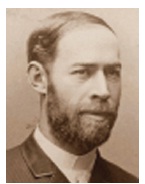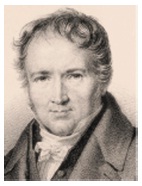Chapter 19 PHOTODETECTORS
- 19.1 PHOTODETECTORS
- 19.2 PHOTOCONDUCTORS
- 19.3 PHOTODIODES
- 19.4 AVALANCHE PHOTODIODES
- 19.5 ARRAY DETECTORS
- 19.6 NOISE IN PHOTODETECTORS

Heinrich Hertz (1857–1894) discovered the photoelectric effect in 1887; its origin was explained by Einstein in 1905.

Siménis Denis (1781–1840) developed the fundamental probability distribution that describes photodetector noise.
A photodetector is a device whose electrical characteristics (e.g., current, voltage, resistance) vary when exposed to light. By converting the energy of the absorbed photons into a measurable form, it can be used to determine the photon flux (or optical power) of a light beam. It can also be used to display temporal and/or spatial interference between ...
Get Fundamentals of Photonics, 2 Volume Set, 3rd Edition now with the O’Reilly learning platform.
O’Reilly members experience books, live events, courses curated by job role, and more from O’Reilly and nearly 200 top publishers.

